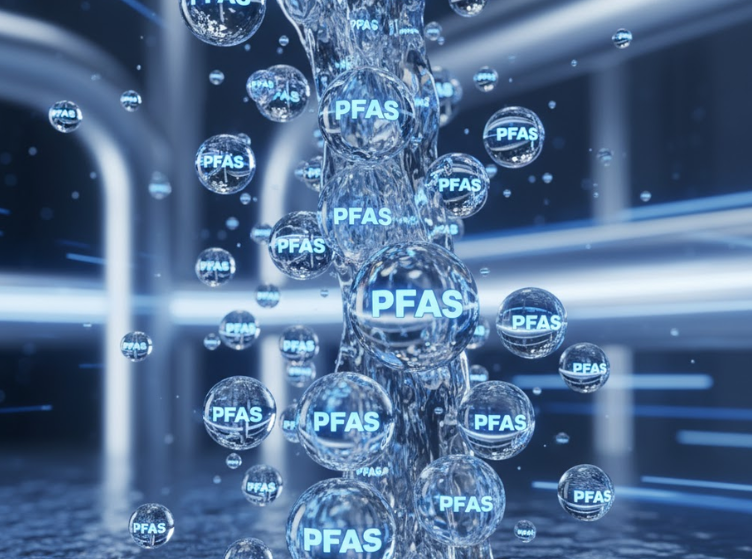Unmasking PFAS: The ‘Forever Chemicals’ Lurking in Our Environment
PFAS, often called “forever chemicals,” have become one of the most pressing environmental challenges of our time. Resistant to heat, water, and degradation, they’ve quietly spread through our ecosystems for decades — from industrial waste to the water we drink. While research and regulation are advancing, what we know so far only scratches the surface of the story unfolding around these persistent pollutants.
What Are PFAS and Why Are We Talking About Them Now?
Per- and polyfluoroalkyl substances (PFAS) are a large group of man-made chemicals that have been used since the 1940s in everything from non-stick cookware, waterproof clothing, food packaging, and firefighting foam to electronics and cosmetics (Glüge et al., 2020). Their unique carbon–fluorine bonds make them exceptionally resistant to heat, oil, and water — properties that made them incredibly useful across industries.
But that same durability is also what makes them nearly indestructible in nature. PFAS don’t degrade easily, earning them the nickname “forever chemicals.” For decades, they quietly accumulated in the environment — in rivers, soil, and even the atmosphere.
So why are PFAS only now gaining global attention? Because we’re realizing just how far they’ve spread — and how deeply they’ve entered our ecosystems and bodies. Improved detection technology, large-scale contamination events, and growing health data have put PFAS at the center of public concern and regulatory action. Governments around the world are now setting strict limits for PFAS in drinking water, with some requiring levels below 100 nanograms per litre.
How PFAS Enter and Impact the Human Body
PFAS contamination doesn’t look dramatic. There’s no smell, no color, and no immediate illness — but the effects build up over time.
Humans are exposed to PFAS through multiple pathways:
Drinking water contaminated by industrial discharges or firefighting foams
Food, particularly fish, meat, and crops grown in contaminated soil
Consumer products, like coated cookware, food packaging, or textiles
Air and dust, especially near manufacturing sites
Once inside the body, PFAS bind to proteins in blood and tissues, and accumulate over years. They don’t easily break down or get excreted, which means exposure adds up slowly but steadily.
Studies like (Bonato et al., 2020), have linked long-term PFAS exposure to a range of health effects, including:
Thyroid and hormone disruption
Immune suppression, including reduced vaccine response
Increased cholesterol levels
Kidney and liver damage
Reproductive issues and certain cancers
These findings, now supported by years of epidemiological research, are driving global urgency for monitoring and mitigation.
Why PFAS Are So Difficult to Detect
PFAS are masters of disguise. Chemically speaking, their carbon–fluorine bond is one of the strongest in organic chemistry — and that’s part of why they’re so tough to find and remove.
PFAS molecules come in thousands of different forms, some long-chained, some short-chained, and many proprietary blends. Their structures make them resistant to heat, light, and biological breakdown, allowing them to pass through standard filtration and testing methods unnoticed.
Traditional water testing often focuses on a limited number of PFAS compounds (like PFOS and PFOA), leaving many variants undetected. In addition, these chemicals can stick to surfaces or exist at parts-per-trillion concentrations, requiring highly sensitive instruments and specialized labs to measure them accurately.
How We Can Get Rid of Them
Getting rid of PFAS is challenging, but not impossible. Researchers and engineers are exploring several promising approaches:
Microbial Biodegradation
Recent studies have found that certain bacteria and fungi — including Pseudomonas, Acidimicrobium, and Gordonia species — can partially break down PFAS molecules. Some even show early evidence of cleaving the carbon–fluorine bond, the key to complete mineralization (Zhang et al., 2021). Although still in early stages, this field of research opens the door to biological remediation methods that could complement traditional treatments in soil and wastewater.
Filtration and Destruction Technologies
Currently, most water treatment systems rely on adsorption or separation techniques, such as:
Granular Activated Carbon (GAC)
Ion Exchange Resins (IXR)
Reverse Osmosis (RO)
While effective at removing PFAS from water, these systems don’t destroy the chemicals — they simply transfer them to filters that must be safely disposed of or regenerated (Glüge et al., 2020).
The Way Forward
The story of PFAS is a lesson in both innovation and responsibility. These “forever chemicals” have shown how small molecules can have global consequences — but they’ve also inspired a new generation of solutions.
From advanced sensors and real-time monitoring to microbial and filtration breakthroughs, the fight against PFAS is accelerating. By combining data-driven detection with sustainable treatment, we can innovate new ways that PFAS can be detected and removed from our environments and our bodies.

